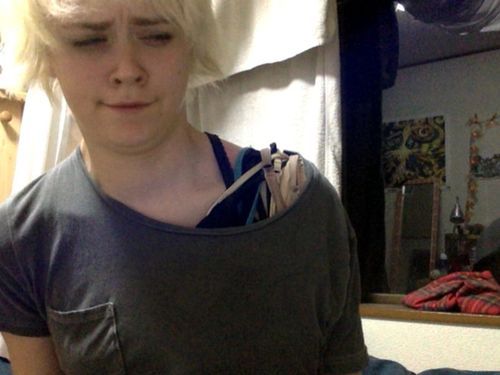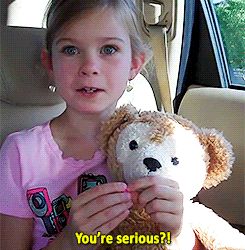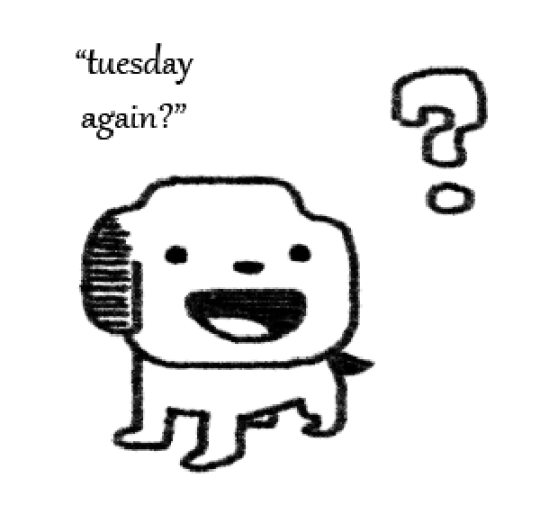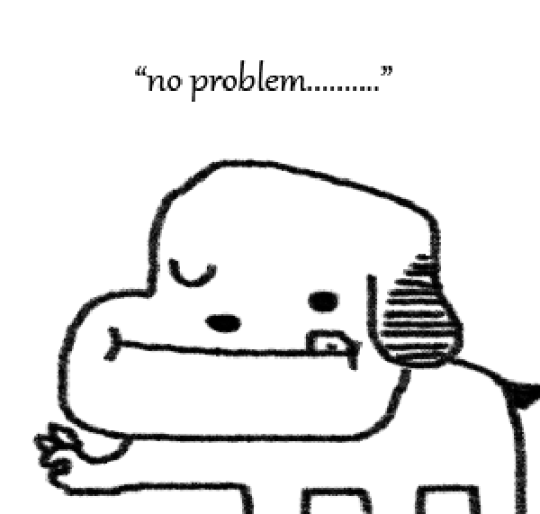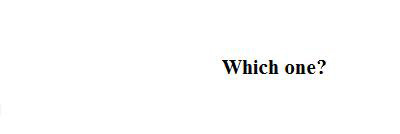Don't wanna be here? Send us removal request.
Text
Af Amer 112B Blogs
Blog Assignment #1
Afrofuturism as a genre can be extremely cathartic to its Black viewers, as it allows one to conceptualize their daily life experience through art. Specifically, artists are able to fictionalize the Black experience in a way that makes it more digestible to viewers, creating more opportunities for viewers to make parallels between what is being shown on screen and what they observe in their daily life. This can be seen through both “The Space Traders” by Derrick Bell and Janelle Monáe’s “Dirty Computer”, as they both use futuristic aspects to help share different parts (and struggles) of the Black experience.
Through “The Space Traders”, audiences are able to see what would happen if Black people were traded away, which helps frame the dehumanization of Black Americans already seen in the modern-day. For example, African Americans are treated as commodities with monetary value rather than actual people. Arguments for not selling them to the aliens included different markets (drug rehabilitation, medicare, etc.) would go down, which shows that morality and the souls of the actual people were not taken into consideration. This parallels the current world, as for example, in politics, African Americans are not seen as people but are instead seen as votes. Because of this, politicians try to adhere to the belief systems of African Americans as a whole for their own benefit, rather than for ethical reasons. Additionally, dehumanization is also expressed in “The Space Traders” through colorism, as people with lighter skin tones (specifically, lighter than a paper bag) were not given to the aliens. This is also similar to modern U.S. culture, as having dark skin usually leads to mistreatment by society due to white-supremacist ideology present in American culture. Ultimately, this is an example of Afrofuturism because it uses futuristic and extraterrestrial theming in order to provide a commentary about Black culture and larger society as a whole.
“Dirty Computer” also provides commentary on how African Americans are treated, as it shows evidence of the erasure of Black female thought and individuality by modern society. Specifically, by having their memories wiped, the people are stripped of what makes them unique, ultimately making them a monolith. This is similar to modern society, as Black people (and oftentimes Black women) are grouped into one thinking process. By representing this through Afrofuturism, Monáe is able to present a cautionary tale to her viewers by sharing what would happen if individuality continues to be stripped, while also allowing Black viewers to relate to her work.
Blog Assignment #2
Explain TWO (2) real-life issues that make it necessary to create your Earthseed community. What are you seeking shelter from?
Two real-world issues that drive me to create my own Earthseed community are climate change and an increasing amount of apathy toward COVID and its biological repercussions. Due to increasing temperatures and a lack of reliability in climate, we have to migrate to an area that is more stable in climate and safer for gradual increasing temperatures. Additionally, due to the lifted mask mandate and slow increase of people contracting COVID, it is no longer safe to exist in an area with a large amount of un-masked people.
Quote two (2) Earthseed verses from Parable of the Sower and show how you will apply them to your community. You may be creative in your interpretation.
The two Earthseed verses that will be applied to my Earthseed community are “Drowning people Sometimes die Fighting their rescuers.” and “To get along with God, Consider the consequences of your behavior.” The first verse is integral to my community beliefs, as I feel that people should accept help and information – especially under the circumstances of needing to develop a new Earthseed community. So, people in my community will be encouraged to be open to the information they are given in order to make an informed decision. Though members will not be forced to follow the information given, they should be receptive so as to not hurt themselves more in the future. The second verse is also integral to my community, as people should practice forgiveness, however, the weight of their actions should also be understood. This will be applied by making people talk through their disputes so that they can understand the extent of the harm they caused, and how they can better improve in the future.
Explain WHERE you will create your Earthseed community to be safe.
Due to one of the concerns of the new community revolving around climate change, my Earthseed community will be created somewhere that does not experience drastically hot seasons. Additionally, my new Earthseed community should also be in an area with minimal COVID cases as to not endanger my community. Because of this, my community would be safest in Maine due to the percentage of vaccinated people, the population of the state, and the colder temperatures during Fall and Winter.
Who can join your community and why? Who can’t join? Why not?
Though there are no cultural/religious limits to who can join my community, those who are not willing to learn, listen to everyone’s opinion, and minimize conflict will be turned away (unless there are extreme circumstances). This is because a community must be strong and have a healthy support system so that it is able to flourish. Without the trust, respect, and understanding of one another within the community, its inhabitants are destined to turn on one another and succumb to corrupt powers.
What will your leadership model be for your community?
My leadership model will be based on a council or democracy, where issues and disputes are brought up to the whole group, and everyone has the opportunity to share their own solutions and opinions. A 3/4ths vote will then be administered. This way, everyone is able to have their opinions heard, but the decision that is best for the community will be chosen.
Create a FUTURE TECHNOLOGY (one on the horizon, not something like teleportation or time travel) to help improve life at your Earthseed community.
In order to improve my Earthseed community, portable food filters would be helpful. Similar to Lifestraws that can be inserted in any water source to create drinkable filtered water, food filters could be put on any food to filter out any harmful pathogens. This way, if we are not successful in hunting and scavenging, we can eat dead animals and rotten crops without having to worry about getting sick or wondering how long said animal has been dead.
Explain/show how your Earthseed community will SURVIVE.
My Earthseed community will survive by being kind toward one another but cautious about others not in our group. This way, we can avoid being taken advantage of while still having a strong and fair lifestyle. Additionally, we will defend ourselves when necessary, but will not be constantly hostile. Our goal is to thrive as well as survive, and hunt when we can for food.
Explain/show what TWO steps your Earthseed community will make to build a better future, i.e. education, housing, conservation, farming, etc.
In order to build a better community, the community will prioritize education so that the circumstances for needing to create Earthseed will not be repeated. Because history repeats itself, educating the community about the past is important. Additionally, my community will prioritize farming, as farming can feed a community forever, as long as there are good weather conditions and good farm-land. This way, my community will not go hungry.
Blog Assignment #3
Though Afrofuturism is traditionally seen as extreme on-the-nose futuristic themes influenced by and starring Black people, Afrofuturism has many different definitions that do not necessarily explicitly deal with futuristic practices and themes. More so, Afrofuturism involves a non-traditional take on realism that is more aligned with science-fiction. Because of this, though futuristic and space themes may not be present in a work involving African Americans, magical realism can still be an anchor point for this genre. This can be exemplified by Julie Dash’s Daughters of the Dust. Specifically, though Daughters of the Dust takes place in the past, technology is included that could be considered futuristic, due to the time period. Technological advancements such as cameras add to the Afrofuturistic aspects of the film, as they were new in the time period. Non-conventional examples of Afrofuturism (such as historical ones) are still vital to the genre, as they do not rely on direct metaphors in order to make commentary about the modern world (or in the case of historical examples of Afrofuturism, the time period that the work takes place in). This is valuable, as themes such as slavery and general Black injustice are more likely to be gathered by audience members that may have little to no experience regarding Black issues. In the case of Daughters of the Dust, discusses the issue of moving forward and looking to the future while not wanting to forget the past. Through Afrofuturism in a historical context, audience members are able to relate this to historical Black issues set in the time period of the film. Specifically, Black Americans wanting to keep their roots while balancing their new associations with America and the assimilations and changes that come with it. Because the historical context makes the themes of Afrofuturism more clear (in this work, the future is more tangible, as it discusses advancements seen in the modern world), the messaging and their importance also become clear to the audience. Due to unconventional Afrofuturism such as historical Afrofuturism, the importance of Black traditions is also made more clear. Due to real-world examples of new practices (as opposed to fictional ones seen in conventional futurism), the juxtaposition between tradition and modernity is easier for audiences to contextualize. This can also be seen in Beyoncé’s “All Night”, as themes of reformation are present in the music video. The historical motif of the black and white filming style and the clothing choices help perpetuate the belief that tangible historical examples can still be a valid method of commentary – especially through Afrofuturism.
Blog Assignment #4
Afrofuturism is a powerful tool to hold a mirror up to society through fiction. However, rewriting history can either be a benefit or a hindrance to those messages. Though rewriting history is an interesting thought experiment, depending on how they are written, it can be harmful to some communities. When done differently, however, it can be extremely powerful to the communities featured in the rewritten history. For example, “Herd Immunity” and “Like Daughter”, are both cautionary tales that make claims pertaining to the direction technology is heading, and how building a community within society is important. Specifically, in “Like Daughter”, no communities are hurt because history is not rewritten in a way that makes audiences sympathize with oppressors and put minorities in a narrative shadow. Instead, the short story rewrites history from a scientific and law perspective. This way, a mirror is still held up to society to show the dangers of letting technology and science go too far without regulation. Additionally, though the story is told from the perspective of a friend (rather than to who the occurrences are happening), the new perspective is not harmful to another community, and offensive to the Black community. Additionally, in “Herd Immunity”, the rewriting of history by introducing a plague still provides an opportunity for a commentary to be made about society but does not harm communities in the process. Because of this, underrepresented communities are more likely to internalize the messaging. This differs from Lion’s Blood, as it centers White people. In Lion’s Blood, history is rewritten so that White people were enslaved and Black people were their masters. Because the majority of the atrocities directed toward enslaved people were copied over to the Irish in Lion’s Blood, it can possibly be seen as insensitive. For Black readers, it can be harmful to re-envision the violence committed during the slavery era (even if they are committed against White people). Additionally, no racial group should have to endure slavery – even if fictional. Because of this, it can be extremely harmful to other communities. Though Lion’s Blood is powerful due to the alternate histories presented (thus forcing audiences to evaluate their own biases, especially in regards to how they view Black people), the partial harm it presents to Black communities is still substantial. However, if rewritten, it can still hold a mirror up to society regarding their biases, while neglecting to hurt other communities due to the rewritten history.
Blog Assignment #5
Due to the broad amount of ways Afrofuturist stories can be told, they can take on many perspectives. For example, Afrofuturism can be told through the lens of the colonizer, which exemplifies how “othering” can occur within Afrofuturism. Though one may think of Europe when first contextualizing colonizers and colonization, in the context of Afrofuturism, any group of people can become a colonizer when aliens and other supernatural beings are introduced into the universe. Like many tropes surrounding Afrofuturism, stories told through the lens of the colonizer have the opportunity to hold a mirror up to society and allow audience members to see themselves in a light that they might not otherwise view themselves in. For others, however, it provides an opportunity for audiences to see how their prejudices may hurt others. For example, in the film District 9, audiences are able to better paint themselves as colonizers in a way that they might not have already been imagined and evaluate their handling of those who are “othered” in society.
Due to the stories explored in District 9, audience members are able to observe how the wider in-universe society treats the Prawns, which can be compared to how real-life society treats those who are physically different. In the film, colonizers clearly have the upper hand, and therefore dictate how the Prawns are treated. Because of this, prior to Wikus’ transformation into a Prawn, he is treated highly by society (and is even promoted, exemplifying the District’s admiration of him). However, after the transformation, the District turns on him and strips him of his autonomy through dehumanization. This plot can also be applied to society’s treatment of minorities – whether it be those without racial privilege, those without able-bodied privilege, or those without privilege pertaining to their sexuality. Similarly to in District 9, those with the privileges listed above control how society views those who are underprivileged, which oftentimes results in these groups being cast away by society and dehumanized. Through the lens of the colonizer, audiences are able to see the harm in both their thought processes and actions, hopefully causing them to pivot their beliefs regarding underrepresented groups. Afrofuturism specifically is a helpful genre to convey this theme of messaging, as audiences are also more likely to attribute their biases and beliefs to how they think of African Americans, which would create a more progressive future. Though telling Afrofuturist stories through the lens of the colonizer can be harmful if not done correctly, they ultimately aid in positively changing society.
Blog Assignment #6
Afrofuturism is extremely important to Black people both culturally and economically, as it provides many opportunities for Black people while also influencing future creatives. Because the film and general media industry are unfortunately very geared toward economics instead of experiences, it is important that many people are both creating and giving money to Black projects so that they continue to be funded and consumed. In the context of UCLA’s Afrofuturism class, short stories, short films, and essays discussing the importance of Afrofuturist themes and how they pertain to Black struggle and triumph all add to the number of works that pertain to Afrofuturism, thus making people more aware of it. Awareness of Afrofuturism is extremely important to Black people, as consumption of the media – regardless of its form – lends itself to be cathartic. Because works of Afrofuturism pertain to both Black struggle and excellence (such as Black Panther, Parable of the Sower, and Lion’s Blood, for example), Black people are able to see themselves represented while also empathizing with the characters on screen. Works of Afrofuturism are also important to Black economic prosperity, as there are not many opportunities for Black people to become successful actors, writers, or directors due to blatant racism in Hollywood and the general media. However, because Afrofuturism focuses on Black people and Black experiences, Black people have the opportunity to become actors, writers, and other positions in media, allowing them to influence the general public on a greater scale. This is important, as it creates a snowball, and influences more people to create Afrofuturist works. Additionally, a large number of Afrofuturist works heightens the credibility of the field, which allows people to do more research and create more analyses and arguments in regard to the genre. An increased works amount of Afrofuturist works also allows non-Black audiences to see possible harms (whether intentionally or unintentionally) they have committed toward Black people in their lives, and make necessary changes. Afrofuturism is especially important to this, as the technological and sci-fi aspects of the genre partially disguise the messages of the media by making them more digestible. As a result, audiences will likely be more apt to accept the messages and criticisms of the work. Similarly, Afrofuturism is also important because it allows non-Black people to see that Black people are not a monolith and that they not only exist but are also welcomed in the future.
6 notes
·
View notes
Text
Af Amer 112A UCLA Blogs
Blog Assignment #1
Though I can count the number of horror movies or TV shows I have seen on one hand, I can still appreciate the horror genre and its highly effective storytelling through its ability to immerse the audience in the story while making commentary on the world. This is especially prominent in the Black horror genre, as it oftentimes is an avenue used to highlight racism toward the Black community. Works such as Jordan Peele’s “Get Out” highlights racism in its own way (whether it be through pointing out the hypocrisy and nonessentiality of racism, directly combatting stereotypes, or holding up a mirror to its non-POC audience), which both normalizes Black culture and validates the experiences of being Black in America.
“Get Out” also amplifies the experience of Black Americans through horror, as both the central themes of the story and the symbolism within it both highlight racism to an audience that may not be aware of it while comforting and validating an audience that is unfortunately too familiar with it. In the context of “Get Out”, the Armitage’s all take part in microaggressions toward Chris that vary in style but are all harmful. For example, Dean Armitage states that he “would’ve voted for Obama for a third time”. To a non-BIPOC audience, this may not seem microaggressive and may even be something they have said themselves to a Black person in hopes of being complementary. However, to a BIPOC audience, Chris’ annoyance with the statement is comforting, as the fixation of white Americans to talk about the only Black person/fact they know to the only Black person in the room is an unfortunate familiar experience. Because the line is said by one of the villains of the movie, the audience is asked to question their own definition of allyship, and whether their efforts of seeming more inclusive are doing more harm than good to the communities they wish to protect. “Get Out” also tackles the hypocrisy of racism, as African Americans are oftentimes seen as lazy or undesirable by a large part of American society. In “Get Out”, Black people are specifically chosen to swap brains with wealthy white people due to their skills and abilities. Through this means of storytelling, Peele shows the audience that racist thinking is both nonsensical and paradoxical.
Black horror is extremely necessary to highlight the experiences of Black Americans, as it allows viewers and consumers to immerse themselves into the story and see themselves (for better or worse) in the characters. To a Black audience, the experiences of the characters are recognizable, though they might be slightly exaggerated to fit the horror genre (though black bodies were used as vehicles for a white agenda during slavery, for example, it is unlikely that brains were literally swapped between black and white people). To a non-Black audience, however, one is called to question their intentions and their own biases toward Black people.
Blog Assignment #2
Through reading “The Good House” by Tananarive Due, I have gained a newfound respect for the practice of Vodou. The novel serves as a cautionary tale for those who have interests in inappropriately practicing Vodou while also representing themes of racism in both a metaphorical and literal sense. This story is most influential when told from a Black perspective, as Vodou is practiced most often by members of the Black diaspora. Because of this, the Black perspective gives a truthful and respectful explanation of Vodou, and effectively warns readers about its consequences. The Black perspective in “The Good House” is also important as it shows the importance of generational knowledge and the significance of ancestry in Black culture. Though this generational knowledge is expressed supernaturally, it also serves as a powerful metaphor for generational knowledge in regard to everyday Black issues. Overall, Black horror is a necessary method of storytelling for Vodou in a supernatural sense and for metaphors that can be made about Vodou in the natural world.
The Black perspective of the characters in “The Good House” gives an authentic view of Vodou, and thus encourages readers to closely heed the warnings expressed in its scenes. For example, Angela Toussaint describes how out of place and evil the baka is in extreme depth. The details include its smell, its ability to corrupt thoughts and amplify one’s negative feelings, and its need to illicit chaos and misfortune. The extreme detail of these traits is unique to those practicing and those who have experiences with Vodou, which makes the Black/African perspective more equipped to emphasize the dangers of practicing it. Additionally, showing that even the most experienced users still have difficulty beating the baka also adds to the cautionary aspect of “The Good House”. Gramma Marie’s fear and hesitation in relation to the baka despite her having a large amount of knowledge about Vodou shows that it should not be messed with.
“The Good House” also has themes of generational knowledge, which is also more impactful when told from a Black perspective. For example, toward the end of the novel, Angela notes that Gramma Marie speaks and lives through her during the battle with the baka, and that this knowledge feels intrinsic to her. This can also be a metaphor for combatting racism, as the racial experiences of our Black ancestors have been passed down to us, giving us knowledge on how to handle racial prejudice in the modern day. Like the baka, the micro- (and macro) aggressions are extremely similar to what our ancestors have experienced, however, new generations have to combat them.
Blog Assignment #3
Candyman (1992) and Candyman (2021) are great examples of the difference between black horror and black people in horror. At first, these ideas sound similar, as they both feature a black cast in a horror movie. However, the nuances that accompany these labels are extremely different, as black horror is made for a black audience, so many tropes that are harmful to Black people are not included. Additionally, black horror allows Black people to be the protagonists of their own stories. Black people in horror movies, however, are handled with little to no care. As a result of this, many of the characters are reduced to tropes and stereotypes and are oftentimes included just to support the white protagonist. As a result, Black people become props and accessories in their own stories, which can be harmful to how the general public views black people. So, by not being cognizant of the narrative being told by a group of people, communities can be hurt. By evaluating the themes seen in both Candymans, we are able to see specifically how black horror is much more impactful than just putting Black people into a horror movie.
The original Candyman’s treatment of African Americans perpetuates stereotypes and does not put them at the center of their own story. For example, there is a large amount of disdain toward the people who live in the projects. As a result of this, poverty and systemic racism are portrayed as scary and fictional, rather than a reality that people experience every day. Implicitly, this teaches audience members to be detached from the Black experience, and treat them more like characters than people. Additionally, many of the Black characters in the original Candyman represent tropes. For example, Candyman inflicts violence on everyone, implying that Black men are scary monsters. Jake also is an example of a trope, as he only exists to be a guide, rather than an actual person with feelings.
The 2021 version of Candyman encapsulates the essence of Black horror as it provides commentary while centering Black people, making them the center of their own story. Specifically, in the 2021 version, the Candyman is seen as an avenger rather than as a monster criminal, combatting the stereotype that Black people are inherently violent. Additionally, the newer version also has a Black protagonist and Black supporting characters, ensuring that the story is truly Black centered. In doing so, Black people are humanized in the media and are not seen as monsters.
Blog Assignment #4
Eve’s Bayou is an extremely troubling film, as it represents Black horror as something that is real and tangible. Instead of fighting imaginary ghosts and spirits, the main characters instead have to fight and navigate the monsters within themselves, family members, and other close relationships. Though the film is uncomfortable to watch at many points due to its themes and plot points, Eve’s Bayou allows audience members to reflect on their own experiences with horror, and how this is still relevant to Black horror. I would like to particularly explore the themes of secrets and responsibility in the movie, as both are very grounded in reality despite also being key aspects of Black horror. By making these some of the main themes seen in the film, the audience is more likely to connect to the themes and see how they apply in their own lives without the added layer of separation caused by adding unrealistic horror elements.
Secrets are a very realistic horror explored in Eve’s Bayou, and their consequences are made clear to the audience, allowing them to make their own conclusions about their danger. Specifically, the (badly kept) secret of Louis Batiste’s infidelity is shown to have extreme consequences for both him and his family. Due to his recklessness, both of his daughters lost their innocence (in different ways), and the Batiste family was torn apart. Because of this, it can be argued that Louis is one of the monsters in the film, not the voodoo portrayed. By seeing the consequences of secrets, the audience is more likely to reflect on their own actions while simultaneously recognizing the weight of them. Because of this, Eve’s Bayou could potentially be the catalyst behind an audience member realizing that their actions can directly affect other people, making them the monster.
Responsibility is also a key theme seen in Eve’s Bayou, as Eve feels responsible for killing her father, and as a result, holds extreme emotional baggage. Through this, the audience is able to see the consequences of making large permanent decisions and evaluate if they have thought through all of the possible outcomes of this decision. Additionally, though the event of Louis’ death is painted to be the result of voodoo, one could make the argument that this event was caused only by Louis’ lack of ability to take responsibility for his actions. This also applies to the audience, as it encourages them to take full responsibility for their actions in order to not hurt others.
Blog Assignment #5
Representation in media is extremely important for marginalized communities and the general audience that views the media as the marginalized community is able to see themselves depicted on screen and general audiences are able to challenge any stereotypes they have toward the marginalized community. This also applies to Blacula, as it supplies representation that is beneficial in both the context of the film and to the audiences watching it. The political climate in regards to the film’s release is also significant to the representation it provides, making it more meaningful. Ultimately, the release of this film and its contents sparked hope in both the Black horror genre and films as a whole.
Representation is an integral part of Blacula, as it depicts many marginalized groups, normalizing them for a wider audience. For example, Black people are depicted as nobility, which was rare in media during that time period. Black people were oftentimes (if not, always) depicted through the lens of stereotypes, which painted them in a negative light. However, by showing that Black people are not a monolith and can hold many titles (including regal ones), the implicit (or explicit) biases the audience may have toward Black people can start to be challenged. Additionally, Blacula depicts a gay couple, which was also not seen often in that time period. By normalizing relationships such as these, audiences are more likely to stop holding on to their biases and see people as people. Though Blacula does have some homophobic aspects (calling the characters the f-slur, etc.), the overall positive representation of both a gay couple and an interracial couple takes steps toward normalizing and appreciating people that often did not get the opportunity to be represented in media.
The political and social climate in which Blacula was released are also relevant to the film’s strides toward representation. From a social standpoint, vampires were often seen as very ghostly and one-dimensional. However, with the release of Blacula, vampires were allowed to step outside of this box. William Marshall’s Blacula let vampires become suave and attractive, which led to more artistic freedom for vampires in future films. Politically, Blacula is also relevant as there were very few roles for Black people during the time period. So, by casting a Black actor and overall making Blacula a very Black-centered movie, more directors and writers were given the courage to cast Black leads in their movies, thus providing more representation for the people watching them.
Blog Assignment #6
The main purpose of horror, and all creative media in general, is to take something mundane that is centered in reality and change it so that it becomes whimsical and a lot less tangible. This way, audiences are still able to engage with difficult topics, and maybe even topics they experience on a day-to-day basis, at arm's length. Through the creative process, people and their issues (or issues about society) are able to be seen without having to be directly experienced. The same is true for “Paralysis”, as it highlights the scariness of sleep paralysis through a supernatural, horrific lens. Through watching this short film, audience members are able to see themselves in the main character or empathize with their struggles. The horror genre is a great avenue to do this through, as it is able to show those of us who haven’t experienced what the media is trying to convey how scary, jarring, or unsettling an experience is.
For example, in “Paralysis”, the main character’s issue with sleep paralysis is painted as a supernatural issue rather than a biological one, highlighting how scary sleep paralysis is. The main character is shown in many vulnerable states, such as lying awake with her eyes open but unable to move, and trying to wake herself from scary dreams. To someone who experiences sleep paralysis, this is not an uncommon experience. However, to an unaware viewer, the imagery used in the film such as flashing lights and bloody dreams sleep paralysis becomes more than “being unable to move.” Instead, the feelings of vulnerability, fear, helplessness, and discomfort are able to be better conceptualized by the viewer. This is particularly beneficial, as viewers who may not be familiar with sleep paralysis may be more lenient on others in their lives when issues occur due to sleep paralysis.
In addition, “Paralysis” emulates how difficult it is for Black women to receive in healthcare. Though the main character goes to a therapist that specializes in supernatural activity, she is discounted, and her problems are reduced to a simple biological phenomenon. Though she provides evidence that her symptoms are most likely paranormal (such as the knife in her bed and the appearance of a scar on her arm), her symptoms are diminished. In this way, “Paralysis” allows audience members to understand what being a Black woman in need of medical assistance. Like understanding sleep paralysis, understanding the struggle of being a Black woman in America allows for more empathizing, and subsequently, more change.
5 notes
·
View notes
Photo

“I’m Michelle, But my friends called me MJ.“🌹🥀🖤
54K notes
·
View notes
Text
im extremely nosy but i dont have loose lips and thats the best combination tbh im not here to spread rumors or hurt anyone im only in it for the knowledge of everyone’s business i wont tell anybody but i NEED to possess ALL of the secrets
211K notes
·
View notes
Text
“May your choices reflect your hopes, not your fears.”
— Nelson Mandela
5K notes
·
View notes
Text
It sucks when you can't get "Who" or "What" you want...
Yet!!
28K notes
·
View notes
Text

this is the money dog, repost in the next 24 hours and money will come your way!!
3M notes
·
View notes
Photo


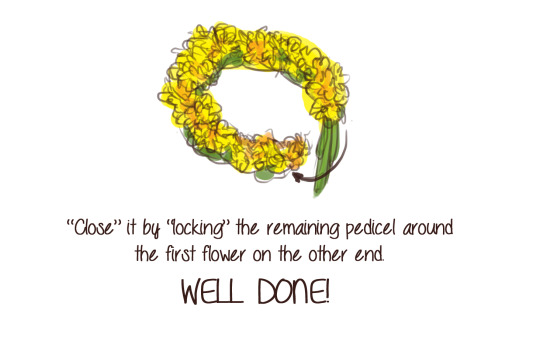
A how to make flower crowns with dandelions. Not sure if it will work on other flowers, but as long as the stalk/pedicel is long it should be alright O v O Also I hope it’s understandable ahah
201K notes
·
View notes
Video
109K notes
·
View notes
